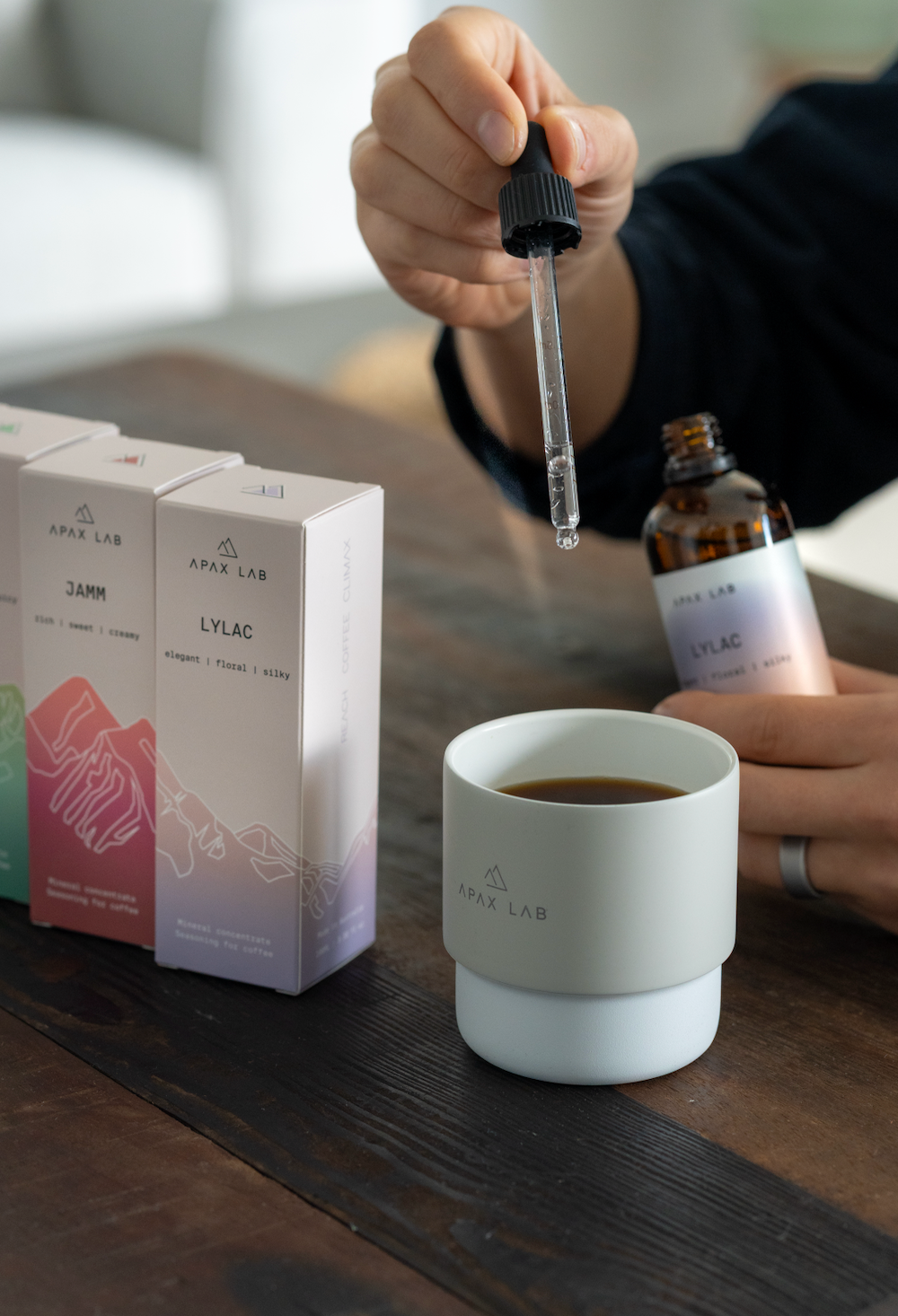When it comes to brewing coffee, the water you use plays a crucial role in the final flavour of your cup. You might have heard of terms like General Hardness (GH) and Carbonate Hardness (KH) being thrown around, particularly in contexts like aquariums, water chemistry, or even brewing beer. But at APAX LAB, we choose not to refer to GH and KH in our products—and here’s why you shouldn’t rely on these concepts when brewing your coffee.
Understanding GH and KH
GH (General Hardness): GH measures the concentration of calcium (Ca²⁺) and magnesium (Mg²⁺) ions in water. It’s a common metric used in various industries to determine the “hardness” of water, which can influence everything from the health of aquatic life to the scaling in pipes.
KH (Carbonate Hardness): KH refers to the concentration of carbonate (CO₃²⁻) and bicarbonate (HCO₃⁻) ions. These ions act as buffers, stabilising the pH of water, which is why KH is often discussed in contexts where pH control is important, such as in brewing beer or maintaining aquariums.
Why GH and KH Are Insufficient for Coffee Brewing
1. GH and its origin in coffee
The use of GH in coffee originated not from its impact on flavour but from its role in preventing or managing scaling in espresso machines and other equipment. Scale is a buildup of minerals, primarily calcium carbonate (CaCO₃) and magnesium carbonate (MgCO₃), that can form on the heating elements, boilers, and pipes of espresso machines. Over time, this scale can reduce the efficiency of the machine, lead to costly repairs, and affect the consistency of coffee extraction.
- Example: A high GH value indicates a higher concentration of calcium and magnesium, which means a greater potential for scale formation. This is why water with a high GH is often treated or softened to protect the equipment, rather than to enhance the flavour of the coffee.
However, while GH is useful for understanding scaling potential, it is not a reliable indicator of how water will influence the taste of coffee. Focusing solely on GH can lead to an incomplete understanding of the water’s role in flavour development.
2. Missing Important Minerals
While GH tells you about calcium and magnesium, it completely overlooks other essential cations like potassium (K⁺) and sodium (Na⁺), which play significant roles in the flavour profile of coffee.
- Example: Potassium can enhance the sweetness and richness of coffee, adding depth to the flavour. A coffee brewed with water that has a balanced amount of potassium might have a fuller, more rounded taste, making it more enjoyable. Sodium, on the other hand, can bring brightness and vibrancy to coffee, enhancing its liveliness and making it more palatable. By only focusing on GH, you miss out on these flavour-enhancing elements, leading to a potentially flatter and less complex cup.
3. Neglect of Anions
Just as some crucial cations are overlooked, KH’s focus on carbonate and bicarbonate ions ignores other important anions such as chlorides (Cl⁻) and sulfates (SO₄²⁻), which significantly impact the taste and quality of coffee.
- Example: Chlorides are known to enhance flavour clarity and intensity. When present in the right concentrations, they can help bring out the subtle notes in your coffee, making the taste profile more defined and pronounced. Sulfates, however, can impart bitterness and astringency. While some level of sulfates might add complexity, too much can make the coffee unpleasantly bitter. Ignoring these anions by solely considering KH can result in a brew that lacks the desired balance and nuance.
4. Variability Within GH
One of the key limitations of GH is that it represents a combination of calcium and magnesium concentrations, but it does not specify the ratio between the two. For a given GH value, there could be an infinite combination of calcium and magnesium, and this variation can tremendously impact the flavour profile of your coffee.
- Example: A water profile with a high calcium concentration might enhance the body and mouthfeel of the coffee, while a higher magnesium concentration could accentuate acidity and brightness. Depending on which ion dominates, the same GH value could produce two very different cups of coffee. This is why simply knowing the GH isn’t enough; you need to understand the specific contributions of each ion to predict and control the outcome.
5. Not Considering All Factors
Brewing coffee is a complex chemical process that involves more than just calcium, magnesium, carbonate, and bicarbonate. The interaction of various ions in water, including potassium, sodium, chlorides, and sulfates, can dramatically alter the flavour profile of coffee. Relying on GH and KH alone oversimplifies this process and fails to account for the full spectrum of factors that contribute to a perfect brew.
- Example: Imagine trying to brew a delicate Ethiopian coffee known for its fruity and floral notes. If you only consider GH and KH, you might miss the importance of having a balanced chloride content that could enhance these flavours. As a result, your coffee might taste muted or overly acidic, lacking the vibrant fruitiness that makes Ethiopian coffee so special.
Our Approach

At APAX LAB, we take a more holistic approach to water chemistry, focusing on the complete profile of ions in water rather than just GH and KH. By considering the full range of minerals—cations like potassium and sodium, and anions like chlorides and sulfates—we ensure that our mineral concentrates help you achieve the best possible flavour in every cup.
To dive deeper into how different ions impact coffee flavours, we’ve explored these effects extensively in our APAX Ion Triangle article. This approach allows us to go beyond the traditional metrics and provide a more comprehensive understanding of how water quality influences your coffee experience.
This is why we believe that using GH and KH to communicate about mineral content is incomplete and potentially misleading. For a truly exceptional coffee experience, it’s essential to look beyond these traditional metrics and consider the full spectrum of water chemistry.






